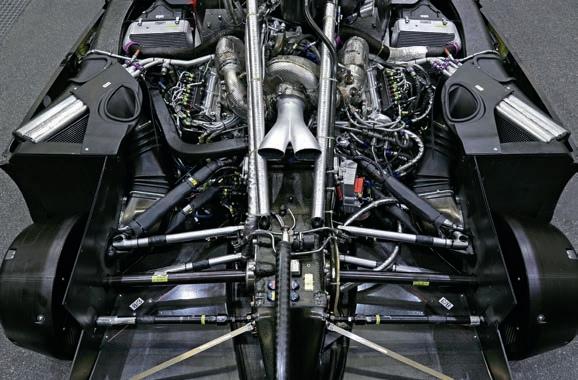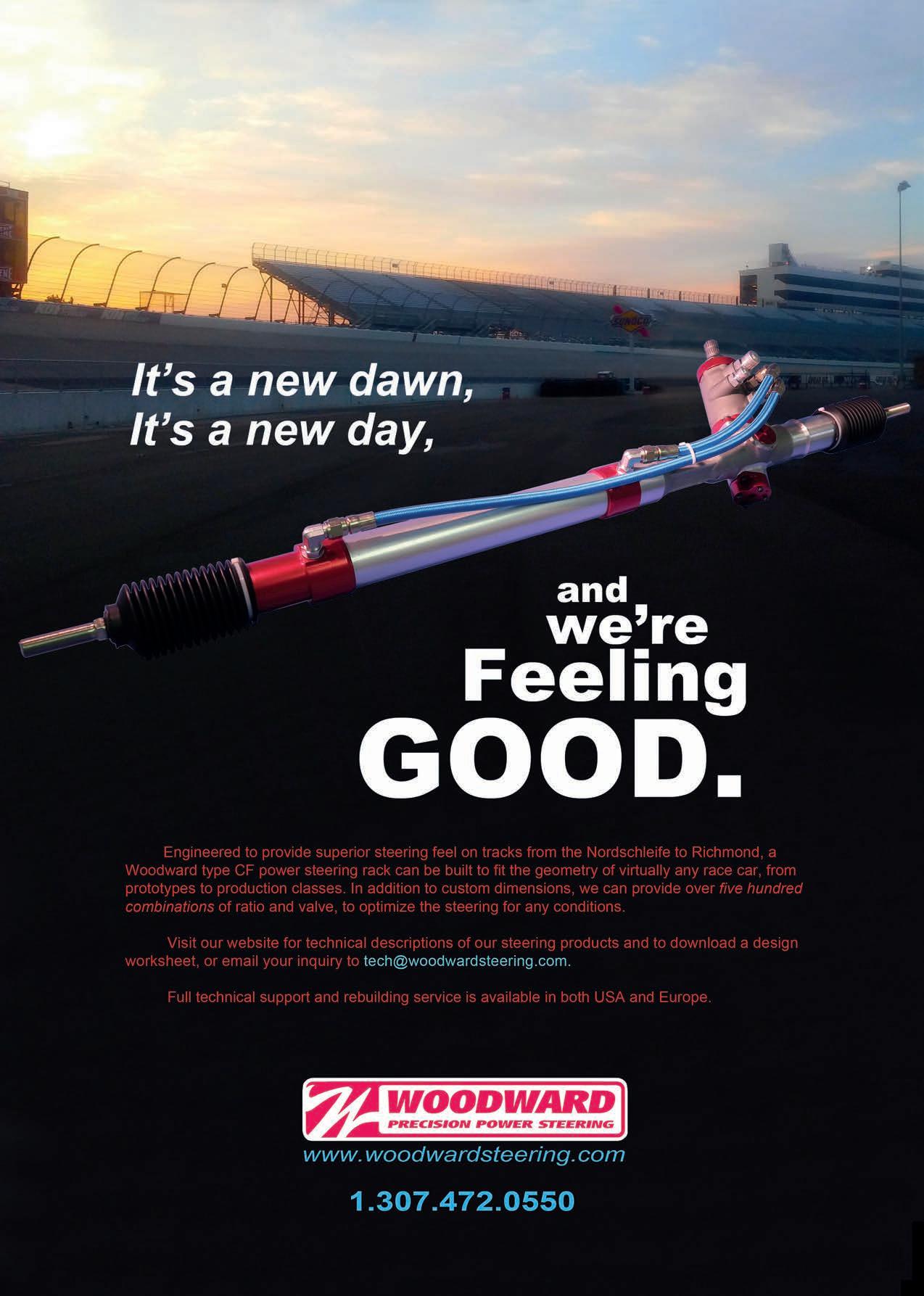
5 minute read
LEENA GADE
Fuel for thought
Are OEMs and the motorsport industry missing a trick?
Iwrite this sat on an aeroplane to Charlotte. In my cabin there are three other people, 10 in Economy, none in Business and maybe some in First Class. Mid-pandemic, there is a daily flight from London to Charlotte and, instead of the usual nine hours, the reduced payload means it’s done in seven and a half hours. That’s not progress. The ’plane still burns one of earth’s most precious resources, albeit a bit less when it’s not full, and still owns an impressively large carbon footprint.
Now before anyone thinks, and then says it, I care deeply about my impact, and that of the motorsport industry, on the environment for a variety of reasons. Yes, I am aware I work in an industry that also burns a precious and finite resource, using transportation that isn’t clean and with materials that can be toxic. But that doesn’t mean I don’t care and that we don’t have a moral responsibility to our children.
I struggle with anyone that tells me my impact is minimal, or it’s hypocritical to work in racing and then try to be greener, especially industry insiders. It’s a bit like saying why bother using the toilet when you can just throw it out of the window, Middle Ages style.
Humans are resourceful and, in the case of transportation, we have seen a revolution in less than a century that was driven by the need to progress. A new chapter Alongside Formula E, now with an evolutionary car, we have also seen the debut of Extreme E, an electric World Touring Car Series and, in the future, a new electric GT series, which would bring pure electric racing into an endurance racing format. All of this is great. It’s a bit like 2006 when Audi re-introduced Le Mans to diesel and a new chapter in racing history was written.
Many at the time were appalled that such a fuel could even be considered in racing but, once you sift through the pessimism, you see progress was made in bringing a new technology to the track (nine overall Le Mans titles between Audi and Peugeot). However, I don’t think electric racing alone is enough.
An infrastructure is developing that is bringing electric technology to many Londoners, allowing them to move around the city in less noxious gas-emitting vehicles. I don’t believe the London bubble is representative of anywhere else in the UK, though, and other areas are years away from enjoying the luxury of electric transportation.
For many smaller places, it simply won’t be economical to introduce electric charging structures because there isn’t local authority or central government investment available.
Thirty years ago, on a two-week placement in an engineering firm, I wrote an essay about a hydrogen car as part of a project on possible future projects. I’d been taught about climate change at school so this was exciting for me.
Sadly, that car was just a young engineer’s dream, and the options today are still too few. My interest in clean alternative fuels was spurred by a research paper written by Aquafuel who provided Formula E with fuel to use in generators to charge the batteries. It looked into the use of glycerine from naturally occurring algae to power ICE, and with some success.
It doesn’t provide the same power and performance as petrol, but also doesn’t produce any NOx, CO or CO2. So, while it might not power the next Le Mans winner, it does have cleaner credentials for everyday use.
Except for electric, there is likely no other fuel source out there that provides torque and power with the same expectation of fossil fuel. So how
about combining that fuel into a hybrid to achieve that? We haven’t done enough to find fuels that could be used in our current cars. I say this because in 2030 when no new ICE cars are sold, there are going to be lots of people stuck with ‘dirty’ cars paying high tariffs because they can’t afford an electric alternative, and without viable public transport because it is expensive and still being scaled back. From race to road Why does any of this apply to racing? Well, around 100 years ago, OEMs used racing to validate their road products and technology. But in the last 20 years, racing’s prowess hasn’t always revolutionised mainstream automotive engineering. In fact, on the powertrain front it could be argued that road cars are more advanced. Where OEMs might not want to commit to fully investing in alternative fuels for future models, they could finance niche racing products to explore Ferdi Kräling Motorsport-Bild GmbH alternatives on a small scale. There are plenty of specialised engineering firms experimenting, and using their expertise could be an opportunity to develop a racing certified system. This argument exists because we all want cars for movement
Audi diesel technology was a revolution at Le Mans. Motorsport needs its next fuel revolution and that is not likely to change anytime soon. So as a society, and »While OEMs might not want to commit an industry, we need to show what to fully investing in alternative fuels for is possible. There can be options that still remain true to the art of future models, they could finance niche racing, whilst perhaps sparking complementary technologies racing products to explore alternatives using fossil fuel alongside the battery industry. To be clear, electric has its own controversial and moral issues, so it isn’t the golden ticket to all our green, ethical and sustainable transport. I feel the governing bodies are moving too slowly, with a hang up on equivalence and the past. There are so many clever minds in this business, it would be refreshing to see a partnership between racing and automotive bring a new perspective on our every day. It’s never too late to try something new! l Leena Gade is race engineer at Multimatic Engineering UK











